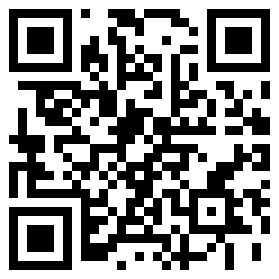Meta-Analisis Media Scratch terhadap Keterampilan Computational Thinking Siswa SMA dalam Pembelajaran Fisika
Abstract
Abstrak. Pembelajaran jarak jauh membuat siswa kesulitan dalam belajar fisika yang abstrak sehingga diperlukan media yang menarik minat belajar siswa. Scratch merupakan salah satu media yang mendukung dalam pelaksanaan pembelajaran tersebut. Tujuan penelitian ini adalah mengetahui kelebihan dan kekurangan serta keterampilan computational thinking selama menggunakan media pembelajaran scratch pada fisika jenjang SMA. Metode yang digunakan adalah Systematic Literature Review dengan analisis deskriptif kualitatif. Scratch mampu meningkatkan keterampilan computational thinking siswa karena didesain untuk mengembangkan kreatifitas dengan membuat animasi dan simulasi, kemampuan berpikir secara sistematis, kolaboratif dan dapat merealisasikan algoritma sehingga mampu menerapkan pola pikir logika yang dapat membuat konsep sederhana menjadi kompleks dalam pembelajaran fisika.
Abstract. Distance education makes it difficult for students to learn abstract physics that is needed media that attracts students interesting. Scratch is one of the media that supports the implementation of this learning. The research aims to determine strengths and weaknesses, computational thinking skills while using media scratch in high school physics. The method used is a systematic literature review with qualitative descriptive analysis. Scratch can improve computational thinking skills because it develops creativity, think systematically, collaboratively, and realize algorithms made up apply logical thinking patterns that can make simple concepts complex in physics learning.
Full Text:
PDFReferences
UNESCO, “School closures caused by Coronavirus (Covid-19),†2020. .
F. N. Arifa, “Tantangan Pelaksanaan Kebijakan Belajar Dari Rumah Dalam Masa Darurat Covid-19,†Info Singkat;Kajian Singk. Terhadap Isu Aktual Dan Strateg., vol. XII, no. 7/I, p. 6, 2020.
A. Akhmadi, “Distance Training Evaluation in Pandemy (Evaluasi Pelatihan Jarak Jauh di Masa Pandemi),†J. Diklat Keagamaan, vol. 14, no. 2, pp. 136–144, 2020.
U. Dewi, “Developing Distance Learning Program Using Video Streaming,†Proc. Int. Clin. Sci. Publ. Educ. Technol., pp. 913–919, 2016.
N. I. Fata, “Peningkatan Keaktifan Dan Hasil Belajar Siswa Mata Pelajaran Fisika Melalui Pembelajaran Jarak Jauh (Pjj) Kelas X Mipa 2 Semester 2 Tahun 2019/2020 Sma Negeri 1 Rowosari Kabupaten Kendal,†J. Egaliter, vol. 4, no. 7, pp. 13–24, 2020.
A. W. Suryandari and Feli Cianda Adrin Burhendi, “Studi Pendahuluan Karakteristik Pembelajaran Online Fisika Selama Masa Pandemi Covid-19,†Pros. Semin. dan Disk. Nas. Pendidik. Dasar 2020, pp. 1–9, 2020.
R. Haryadi and R. Jannah, “Pembelajaran Daring Fisika Pada Siswa Sekolah Menengah Atas ( SMA ),†Edumaspul-Jurnal Pendidik., vol. 4, no. 2, pp. 264–268, 2020.
N. Noftiana, M. Nasir, and N. Islami, “Developmental Scratch-Based Online Learning Media in Dynamic Electric Dynamic Topic to Increase Students Concept Understanding in Students Junior High School,†J. Phys. Conf. Ser., vol. 1351, no. 1, 2019, doi: 10.1088/1742-6596/1351/1/012014.
P. S. Tambade and B. G. Wagh, “Assessing the Effectiveness of Computer Assisted Instructions in Physics at Undergraduate Level,†Eurasian J. Phys. Chem. Educ., vol. 3, no. 2, pp. 127–136, 2011.
P. Karuniakhalida, M. Maimunah, and A. Murni, “Development of ICT-Based Mathematical Media on Linear Program Materials to Improve Motivation Learning Students,†J. Educ. Sci., vol. 3, no. 2, p. 195, 2019, doi: 10.31258/jes.3.2.p.195-204.
N. M. Intana, W. Hardyanto, and I. Akhlis, “Pengembangan Multimedia Pembelajaran Fisika Berbasis Scratch pada Pokok Bahasan Hukum Oersted,†UPEJ Unnes Phys. Educ. J., vol. 7, no. 2, pp. 1–8, 2018, doi: 10.15294/upej.v7i2.27461.
A. P. Martanti, W. Hardyanto, and A. Sopyan, “Pengembangan Media Animasi Dua Dimensi Berbasis Java Scratch Materi Teori Kinetik Gas untuk Meningkatkan Pemahaman Konsep Siswa SMA,†Unnes Phys. Educ. J., vol. 3, no. 3, pp. 77–83, 2014, doi: https://doi.org/10.15294/upej.v2i2.2661.
C. R. SantamarÃa, C. M. Lora, I. R. Quintana, and M. C. Sellés, “Gamesonomy vs scratch: Two different ways to introduce programming,†Proc. 15th Int. Conf. Cogn. Explor. Learn. Digit. Age, CELDA 2018, pp. 216–224, 2018.
J. Aulia, N. D. Permana P, Z. Zarkasih, and T. L. Nova, “Meta-Analisis Pengaruh Penerapan Pendekatan Saintifik Berbantuan Komik terhadap Hasil Belajar IPA Siswa SMP,†J. Nat. Sci. Integr., vol. 3, no. 1, p. 70, 2020, doi: 10.24014/jnsi.v3i1.9617.
S. Papadakis, M. Kalogiannakis, N. Zaranis, and V. Orfanakis, “Using Scratch and App Inventor for teaching introductory programming in secondary education. A case study,†Int. J. Technol. Enhanc. Learn., vol. 8, no. 3–4, pp. 217–233, 2016, doi: 10.1504/IJTEL.2016.082317.
C. Monteiro, P. Catarino, A. Soares, and B. Fonseca, “Vector Equation of a Line: a Scratch Application,†EDULEARN19 Proc., vol. 1, no. July, pp. 3911–3914, 2019, doi: 10.21125/edulearn.2019.1003.
J. Maloney, M. Resnick, N. Rusk, B. Silverman, and E. Eastmond, “The scratch programming language and environment,†ACM Trans. Comput. Educ., vol. 10, no. 4, pp. 1–15, 2010, doi: 10.1145/1868358.1868363.
S. N. K. Amrullah, “Pengembangan Media Pembelajaran Online Berbasis Scratch pada Pokok Bahasan Getaran,†Universitas Negeri Semarang, 2015.
V. Lopez and M. I. Hernandez, “Scratch as a computational modelling tool for teaching physics,†Phys. Educ., vol. 50, no. 3, pp. 310–316, 2015, doi: 10.1088/0031-9120/50/3/310.
M. Armoni, O. Meerbaum-Salant, and M. Ben-Ari, “From scratch to ‘Real’ programming,†ACM Trans. Comput. Educ., vol. 14, no. 4, 2015, doi: 10.1145/2677087.
W.-L. Tan, M. A. Samsudin, M. E. Ismail, and N. J. Ahmad, “Gender Differences in Students’ Achievements in Learning Concepts of Electricity Via Steam Integrated Approach Utilizing Scratch,†Probl. Educ. 21st Century, vol. 78, no. 3, pp. 423–448, 2020, doi: 10.33225/pec/20.78.423.
P. Plaza, E. Sancristobal, G. Carro, M. Castro, and M. Blazquez, “Scratch day to introduce robotics,†IEEE Glob. Eng. Educ. Conf. EDUCON, vol. 2018-April, pp. 208–216, 2018, doi: 10.1109/EDUCON.2018.8363230.
E. D. Naibaho, “Pengembangan Media Pembelajaran Scratch pada Mata Pelajaran IPA Kelas V Materi Kerangka Manusia,†Universitas Sanata Dharma, 2019.
J. A. MartÃnéz-Valdés, J. Angél Vélazquéz-Iturbidé, and R. Hijon-Néira, “A (relatively) unsatisfactory experience of use of Scratch in CS1,†ACM Int. Conf. Proceeding Ser., vol. Part F1322, pp. 1–7, 2017, doi: 10.1145/3144826.3145356.
B. J. Johnson and A. H. Louw, “Building a research culture from scratch at a university of technology,†Mediterr. J. Soc. Sci., vol. 5, no. 1, pp. 151–164, 2014, doi: 10.5901/mjss.2014.v5n1p151.
L. P. Arfiansyah, I. Akhlis, and Susilo, “Pengembangan Media Pembelajaran Berbasis Scratch pada Pokok Bahasan Alat Optik,†UPEJ Unnes Phys. Educ. J., vol. 8, no. 1, pp. 66–74, 2019, doi: 10.15294/upej.v8i1.29515.
J. E. Prayitno, “Pengembangan Media Animasi Interaktif Berbasis Scratch untuk Materi Lensa,†Universitas Negeri Semarang, Semarang, 2017.
V. Serevina, H. and Nasbey, and W. Andriana, “The Development of a Learning Material Using The Scratch Programming Language to Helping Student Leaning Momentum and Impulse Subject in Senior High School,†Proc. Int. Conf. Technol. Soc. Sci., pp. 2–7, 2017.
A. Rusilowati, B. Subali, M. P. Aji, and R. A. Negoro, “Development of teaching materials for momentum assisted by scratch: Building the pre-service teacher’s skills for 21st century and industry revolution,†J. Phys. Conf. Ser., vol. 1567, no. 2, 2020, doi: 10.1088/1742-6596/1567/2/022010.
I. Khasyyatillah and K. Osman, “The Development of CT-S Learning Module on The Linear Motion Topic to Promote Computational Thinking Thinking,†J. Educ. Sci., vol. 3, no. 3, p. 270, 2019, doi: 10.31258/jes.3.3.p.270-280.
A. Afandy, W. Hardyanto, and I. Akhlis, “Simulation of electron motion in electric and magnetic fields using scratch,†vol. 2, no. 5, pp. 177–182.
A. P. Martanti, “Pengembangan Media Animasi Dua Dimensi Berbasis Java Scratch Materi Teori Kinetik Gas Untuk Meningkatkan Pemahaman Konsep Siswa Sma,†UPEJ Unnes Phys. Educ. J., vol. 2, no. 2, 2013, doi: 10.15294/upej.v2i2.2661.
L. Permatasari, R. A. Yuana, and D. Maryono, “Implementation of Scratch Application to Improve Learning Outcomes and Student Motivation on Basic Programming Subjects,†IJIE (Indonesian J. Informatics Educ., vol. 2, no. 2, p. 95, 2018, doi: 10.20961/ijie.v2i2.15206.
C. I. Yogihati, “Peningkatan Kualitas Pembelajaran Fisika Umum Melalui Pembelajaran Bermakna Dengan Menggunakan Peta Konsep,†J. Pendidik. Fis. Indones., vol. 6, no. 2, pp. 104–107, 2010, doi: 10.15294/jpfi.v6i2.1121.
H. Saputra, “Peningkatan Daya Serap Siswa dalam Pembelajaran Matematika dengan Penerapan Teori Belajar Bermakna David Ausubel,†J. Penelit. Pendidik. MIPA, vol. 1, no. 1, pp. 21–26, 2016.
A. Fidai, M. M. Capraro, and R. M. Capraro, “‘Scratch’-ing computational thinking with Arduino: A meta-analysis,†Think. Ski. Creat., vol. 38, no. July, p. 100726, 2020, doi: 10.1016/j.tsc.2020.100726.
C. S. Lee and B. Jiang, “Assessment of computational thinking (CT) in scratch fractal projects: Towards CT-HCI Scaffolds for Analogical-fractal Thinking,†CSEDU 2019 - Proc. 11th Int. Conf. Comput. Support. Educ., vol. 1, no. Csedu, pp. 192–199, 2019, doi: 10.5220/0007755401920199.
M. J. Marcelino, T. Pessoa, C. Vieira, T. Salvador, and A. J. Mendes, “Learning Computational Thinking and scratch at distance,†Comput. Human Behav., vol. 80, pp. 470–477, 2018, doi: 10.1016/j.chb.2017.09.025.
I. N. Serbec, S. Cerar, and A. Zerovnik, “Developing Computational Thinking through Games in Scratch,†Proc. 20th Asian Technol. Conf. Math., no. June, pp. 73–87, 2015.
V. Barr and C. Stephenson, “Bringing computational thinking to K-12: What is involved and what is the role of the computer science education community?,†ACM Inroads, vol. 2, no. 1, pp. 48–54, 2011, doi: 10.1145/1929887.1929905.
K. Brennan, M. Resnick, and MIT Media Lab, “New frameworks for studying and assessing the development of computational thinking,†in AERA, 2012, pp. 1–25, doi: 10.1007/978-3-319-64051-8_9.
L. Seiter and B. Foreman, “Modeling the learning progressions of computational thinking of primary grade students,†ICER 2013 - Proc. 2013 ACM Conf. Int. Comput. Educ. Res., pp. 59–66, 2013, doi: 10.1145/2493394.2493403.
P. Curzon, M. Dorling, T. Ng, C. Selby, and J. Woollard, “Developing computational thinking in the classroom: a framework,†Comput. Sch., no. June, pp. 1–6, 2014.
A. Csizmadia et al., “Computational thinking A guide for teachers,†p. 18, 2015.
C. Angeli et al., “International Forum of Educational Technology & Society A K-6 Computational Thinking Curriculum Framework: Implications for Teacher Knowledge,†Source J. Educ. Technol. Soc., vol. 19, no. 3, pp. 47–57, 2016.
Y. Tabesh, “Computational thinking: A 21st century skill,†Olympiads in Informatics, vol. 11, no. Special Issue, pp. 65–70, 2017, doi: 10.15388/ioi.2017.special.10.
Z. Chang, Y. Sun, T. Y. Wu, and M. Guizani, “Scratch Analysis Tool(SAT): A Modern Scratch Project Analysis Tool based on ANTLR to Assess Computational Thinking Skills,†2018 14th Int. Wirel. Commun. Mob. Comput. Conf. IWCMC 2018, pp. 950–955, 2018, doi: 10.1109/IWCMC.2018.8450296.
Y. Allsop, “Assessing computational thinking process using a multiple evaluation approach,†Int. J. Child-Computer Interact., vol. 19, pp. 30–55, 2019, doi: 10.1016/j.ijcci.2018.10.004.
Y. Yin, R. Hadad, X. Tang, and Q. Lin, “Correction to: Improving and Assessing Computational Thinking in Maker Activities: the Integration with Physics and Engineering Learning (Journal of Science Education and Technology, (2020), 29, 2, (189-214), 10.1007/s10956-019-09794-8),†J. Sci. Educ. Technol., vol. 29, no. 2, p. 215, 2020, doi: 10.1007/s10956-020-09822-y.
L. C. Zhang and J. Nouri, “A systematic review of learning computational thinking through Scratch in K-9,†Comput. Educ., vol. 141, no. June, p. 103607, 2019, doi: 10.1016/j.compedu.2019.103607.
DOI: http://dx.doi.org/10.12928/jrkpf.v8i1.19433
Refbacks
- » Meta-Analisis Media Scratch terhadap Keterampilan Computational Thinking Siswa
- » Meta-Analisis Media Scratch terhadap Keterampilan Computational Thinking Siswa
- » Meta-Analisis Media Scratch terhadap Keterampilan Computational Thinking Siswa
- » Meta-Analisis Media Scratch terhadap Keterampilan Computational Thinking Siswa
- » Meta-Analisis Media Scratch terhadap Keterampilan Computational Thinking Siswa
Copyright (c) 2021 Widya Nugraheni Widiningrum, Wahyu Hardyanto, Siti Wahyuni, Putut Marwoto, Budi Naini Mindyarto
Jurnal Riset dan Kajian Pendidikan Fisika | Journal of Research and Physics Education Studies
Kampus 4 Universitas Ahmad Dahlan
Jl. Kolektor Ring Road Selatan, Tamanan, Banguntapan, Bantul, Daerah Istimewa Yogyakarta
Telp. (0274) 563515, ext. 43514; Fax. (0274) 564604, Hp. +62822 3634 7674
Email: jrkpf@pfis.uad.ac.id
e-ISSN: 2355-620X
This work is licensed under a Creative Commons Attribution-NonCommercial 4.0 International License
Best viewed on Mozilla Firefox at screen resolution 1366 x 768 pixels.
View My Stats







